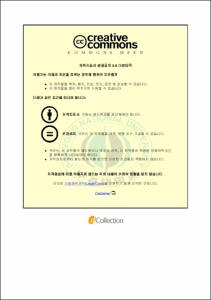7075-T651 알루미늄합금의 마찰교반용접 최적화 및 피로균열전파거동에 관한 연구
- Alternative Title
- A Study on Optimal Friction Stir Welding and Fatigue Crack Growth Behavior in 7075-T651 Aluminum Alloy
- Abstract
- The weight reduction of materials is a key of green technology to reduce both environmental pollution and energy consumption. The usage of non ferrous alloys such as aluminum, magnesium and titanium is very popular for a light weight technology. The aluminum has been known as the best material for light weight in transportation systems due to its good properties for manufacturing and welding. For aluminum welding, a friction stir welding (FSW) is widely applied to the transportation systems since the mid-90s due to its merits such as less porosity, crack, and deformation. The FSW is a novel solid state welding process for sheets or plates using a friction stir phenomenon, and it has been noticed as a next generation welding technology. For the industrial application of FSW, the optimized condition of FSW based on target material behaviors should be systematically studied. Therefore, this study aims to investigate the fatigue crack growth rate behavior of a FSWed 7075-T651 aluminum alloy under optimal FSW conditions. The tensile property of the FSWed joints of Al7075-T651 aluminum plates was investigated by means of their microstructures, the transition of hardness, and a behavior of the fatigue crack growth according to the welding conditions as well.
An Al7075-T651 aluminum alloy plate with a thickness of 6.0mm was used in this study. For the FSW process, a tool with a shoulder diameter of 20mm and a probe diameter of 9mm was utilized. To explore welding condition effects, rotation speed and traverse speed conditions were varied while the other welding conditions were fixed. The welding direction was aligned with the material rolling direction by using a FSWed plate. The plate was 250mm long, 100mm wide, and 6mm thick. The experimental investigation focuses on the statistical variability of the fatigue crack growth rate in a friction stir welded Al7075-T651 aluminum alloy on three different zones, i.e., base metal (BM), weld metal (WM) and heat affected zone(HAZ). Fatigue crack growth tests were conducted on compact tension specimens (CT) by controlling the range of stress intensity factors and by following the ASTM standard. FCGR experiments were conducted at the ratio of 0.1 and 10Hz sinusoidal frequency with three different zones specimens under consistent stress conditions with intensity factor ranged 8, 11.5 and 15MPa(m)0.5respectably
As far as this work are concerned, the optimal FSW conditions are determined as a rotation speed of 600rpm and a traverse speed of 0.8mm/sec or a rotation speed of 800rpm and a traverse speed of 0.5mm/sec. In this study, the maximum hardness of the stir zone was observed at the welding condition of SO-3. The microstructures of the FSWed joints do not depend on the welding conditions. However, in the case of SO-4 specimen, the FSW tunnel shaped defect was found in the stir zone. The variability of the fatigue crack growth rate showed strong dependence on three different zones, i.e., WM, HAZ, and BM.
- Issued Date
- 2012
- Awarded Date
- 2012. 2
- Type
- Dissertation
- Publisher
- 부경대학교 기계설계공학과
- Alternative Author(s)
- Kim, Chi Ok
- Affiliation
- 부경대학교 기계설계공학과
- Department
- 대학원 기계공학부기계설계학전공
- Advisor
- 김선진
- Table Of Contents
- Abstract iii
Nomenclature v
제 1 장 서 론 1
1.1 연구의 배경 및 필요성 1
1.2 국내·외 연구 동향 4
1.3 논문구성 11
제 2 장 이론적 배경 12
2.1 마찰교반용접의 이론적 배경 12
2.1.1 마찰교반용접의 원리 및 특성 12
2.1.2 마찰교반용접 방법 17
2.1.3 마찰교반용접 공정의 변수 18
2.1.4 마찰교반용접의 적용 22
2.2 피로균열전파 거동 26
2.2.1 파괴역학의 발전과정 및 분류 26
2.2.2 선형파괴역학 28
2.2.3 피로균열 전파특성 34
2.2.4 피로균열 전파의 불확정성과 확률론적 취급 40
2.2.5 Scaling factor 48
제 3 장 재료 및 실험방법 51
3.1 재료 및 시험편 51
3.2 실험 절차 및 방법 56
3.2.1 마찰용접교반시험 56
3.2.2 인장시험 57
3.2.3 경도 및 조직시험 57
3.2.4 피로균열전파시험 60
제 4 장 결과 및 고찰 62
4.1 마찰교반용접의 특성 62
4.1.1 초기 용접조건 설정 62
4.1.2 육안검사 63
4.1.3 용접부와 모재의 강도특성 68
4.2 경도분포 특성 75
4.3 조직관찰 81
4.4 피로균열전파 거동 88
4.4.1 재질에 따른 피로균열전파 거동 88
4.4.2 피로균열전파율의 변동성 93
제 5 장 결 론 100
참고문헌 102
감사의 글 115
- Degree
- Doctor
- Appears in Collections:
- 대학원 > 기계공학부-기계설계학전공
- Files in This Item:
-
-
Download
 7075-T651 알루미늄합금의 마찰교반용접 최적화 및 피로균열전파거동에 관한 연구.pdf
기타 데이터 / 10.71 MB / Adobe PDF
7075-T651 알루미늄합금의 마찰교반용접 최적화 및 피로균열전파거동에 관한 연구.pdf
기타 데이터 / 10.71 MB / Adobe PDF
-
Items in Repository are protected by copyright, with all rights reserved, unless otherwise indicated.